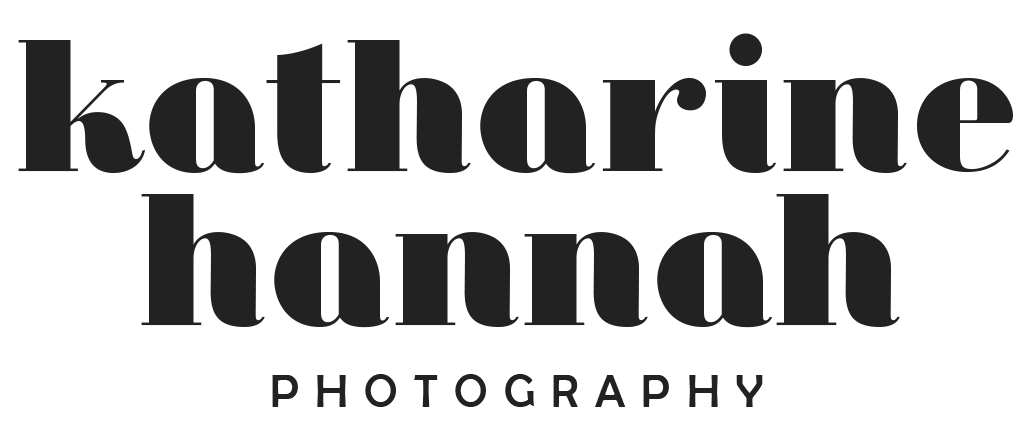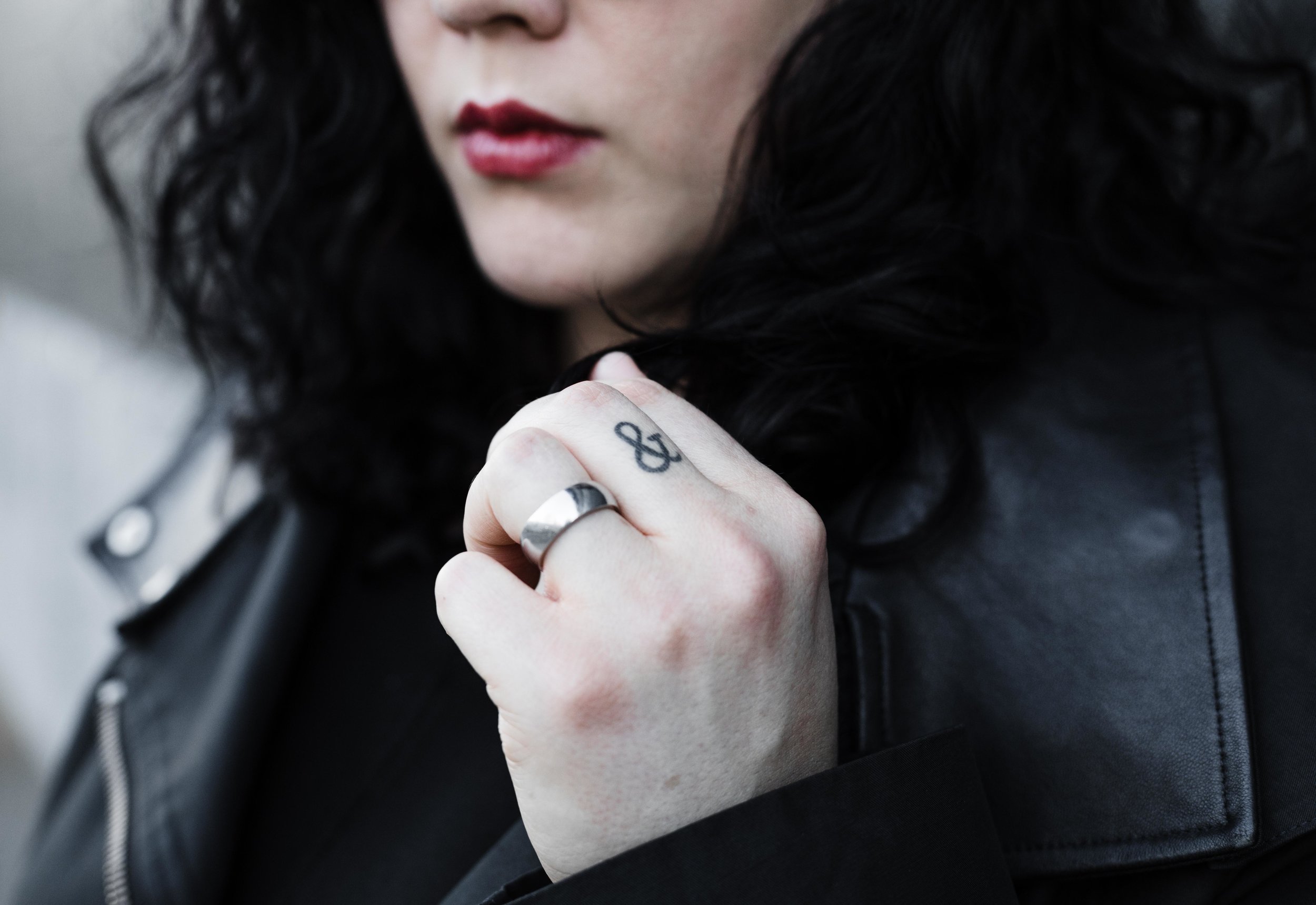Inspired Chicago | Vichcraft
I couldn't be more excited to share this feature with you guys with the incredibly talented, wildly inspirational, and down to earth Jenna Blazevich of Vichcraft. You've probably seen her designs already on your friend's phone background, found her while looking for badass boss ladies on Instagram, or seen her work in person at her various exhibitions in Chicago. I got to sit down with Jenna in her gorgeous studio, learn a little bit about how she got to where she is now, and meet and photograph her cute bird Pz. Not a bad way to spend an afternoon. :)
Q. How did Vichcraft come to be?
I launched Vichcraft about six months after I graduated from college. While I was studying, I worked at six internships, and those were all opportunities to figure out what scale of companies felt right, what kind of client projects I liked, and what things were frustrating about certain environments within the design industry. I was then able to put all those experiences together to create a business that incorporated the things that I liked from past experiences and also include the things I felt were missing.
During school, in addition to the internships, I was freelancing in my spare time for about five years before starting Vichcraft. When I was freelancing, I was doing mostly digital design work, and I wasn’t getting many opportunities to work with types of handcraft, so those were opportunities I had to create for myself with personal projects. The experience that expertise that I generated from working on said handcraft projects allowed me to be more intentional and informed about what I wanted to incorporate into Vichcraft’s aesthetic and offerings.
Q. Where did you go to school?
I graduated with a degree in graphic design from the University of Illinois at Chicago, but I did do three years of fashion design at the university of Cincinnati before I learned what graphic design was. My background in fashion very much relates to my desire to create wearable designs in my shop, and also work on much of the textile screen printing and embroidery projects first-hand.
Q. How did you first get into fashion and then into calligraphy + graphic design?
Fashion school seemed like a very obvious route for me when I was in high school. I was lucky in that my high school had a clothing/construction class, in which I worked with patterns and learned how to construct clothes. I took that class all four years of high school, and built up experience making my own clothes, and went on to study fashion design as my major in college. While there, I learned about graphic design, and also learned more about what a career in the fashion industry would entail. During the summer between my second and third year of school, I did an internship at a gig poster shop because I was really interested in screenprinting, and a few of my fashion school jacket projects had DIY screen prints on the back.
At the internship I learned more about graphic design and printmaking enough to know that I wasn't in the right field and switched my major to graphic design. Then there were a few years of stumbling through graphic design school where I was 3 or 4 years older than most people in my grade and being really frustrated that I wasn't as far ahead as my former fashion school classmates who were doing internships in New York and Los Angeles and I was back in freshman year. That frustration with having backtracked a few years served as one of the motivators behind me forcing myself to do internships while studying. Even though my aesthetic with Vichcraft is consistently the opposite of what I learned in a very Swiss graphic design program at UIC, having the fundamental understandings of layout and setting typography is still very valuable and I’m glad I switched majors.
Q. How and why did you choose to do this in Chicago?
The pace in Chicago is more aligned with the pace that I work at than a smaller city or a major city on either coast. In terms of cost of living, resources, and community, Chicago is different than being in a city like New York where it's more competitive, and people are less inclined to collaborate and raise each other up, as if one person's success is another person's lack of it. I don't feel like the people in the niche lettering and broader graphic design communities that I belong to are that way; there's more room for everyone. Since the cost of living in most Chicago neighborhoods isn’t super high, I can be a young entrepreneur figuring out my place, and there's not as much pressure to find success and stability as soon as possible in order to make ends meet.
Q. Do you feel like you’re connected to a creative community in Chicago?
Yes! Lettering and calligraphy is such a niche thing to be involved in, but there are so many talented lettering and calligraphy and typography designers in Chicago. I really love working alone, and I thrive in situations where I can just put my nose to the grind and work for hours on something, and I'm less inclined to go out to industry events. With that being said, teaching my classes once a month opening my doors to people who have an interest in calligraphy and bettering their lettering skills has been really gratifying and helpful because I’m able to consistently stay a part of this community. Even though a lot of the people who take my classes aren’t designers (and they want to learn calligraphy as something that requires them to put their phone down, and work with their hands), they’re still allowing me the opportunity to open my studio and host a group event which isn’t always my tendency as a creative person.
Q. Has having a creative community helped you grow or learn more as an artist?
Social media platforms are just as inspiring as they are debilitating, so having a creative community allows you to stay accountable and get inspired by their success, while also staying realistic about the hardships and struggles that inevitably come along with achievements. More often than not, your favorite internet follows won’t be as transparent about the darker moments.
Sharing resources and having a group of people that you can call upon if you need help or advice is imperative when you start working for yourself. For me, having consistently talked with and stayed in touch with people who were my mentors and coworkers at past jobs, and making the effort to share my work with them before I launched Vichcraft made it so helpful when I wanted to gather opinions on whether or not self-employment seemed like something that was a good idea for me based on where I was in my career, and how I am as a person. Success as a self-employed person tends to be so much more about your personality traits than it is about your actual talents, and it’s hard to look at your own qualities objectively. I had luckily already built up that community of people who already knew me personally and as an artist, and they were able to give me genuine feedback and help me through the idea of starting a business.
Q. Vichcraft, tell me about the name.
My last name is Blazevich so half of it is my name, and the other half is a reference to handcraft, which has been a part of what drives me as an artist and creator for my entire life. There’s also a long history within the women my family with handcraft, sewing and embroidery. Also it’s obviously a play on the word “witchcraft”, which speaks to my interest in mysticism and the occult, as well as witchcraft’s history as it relates to feminism and solidarity with other women.
Q. How big of a role does feminism play in your work?
For the entire time that i’ve worked as a business, my interest in feminism has been a part of it. Frustrations with with things in the design industry (sexist practices, wage gap, inappropriate behaviour, prioritizing masculine aesthetics) were part of the motivation behind starting my own service-based design business. When I started to make product about six months into running Vichcraft, the first thing I made was the self employed patch which is inspired by a lyric from my friend Bridget Battle’s band, Tweens, and the song goes:
“Surviving in the streets that the men destroyed, we’re tough little bitches cause we’re self employed”
With her permission, I was really excited to celebrate that lyric with a wearable product because it perfectly reflected how I felt. I felt like, we’re gonna be these ladies that are doing it for ourselves, starting our own things, and creating our own rules for everything. Then, girls to the front came after that, and it’s inspired by Kathleen Hanna and girls in the 90’s fronting their own bands and being like screw this, we aren’t able to have a good time at these shows because men are like thrashing around and groping us, so we’re going to create a different version of it ourselves. But “girls to the front” is also a sentiment that can be applied to anything, and people who wear versions of it from my shop can have their own special interpretation.
The nasty woman products came from a significant shift for me and my business, because before this political disaster was brewing, I was already making feminist work but it was also very tied to my personal interests and it wasn't about pandering to new feminist consumers. Trump calling Hillary Clinton a “nasty woman” marked a shift where I needed to begin making conscious decisions about whether or not I wanted to be the feminist store for new age feminist goods that panders to a large crowd. Because I have the capacity to beautify those letters but it’s been challenging for me to be able to find a way that I could stand behind work that feels a bit like pandering, because I don't believe in monetizing a phrase that doesn’t belong to me and I'm also just not interested in making things that are not coming from a place of true originality.
When I made a run of nasty woman shirts, I was just going to make 100 shirts and donate $16 each to Planned Parenthood so everyone who ordered one could wear it while they voted, and we could never talk about Trump again. But of course that didn’t happen, so I’ve continued to make the shirts and continued to donate the money to Planned Parenthood. The same solution is what I’ve used for “nevertheless she persisted” shirts: I had to figure out how I could justify making those shirts, and decided I would donate the money for those to the National Women's Political Caucus which supports women in politics. When I'm making products that are more topical, I donate the proceeds to organizations that are doing important work.








